The Qualcomm Snapdragon 835 Performance Preview
by Matt Humrick & Ryan Smith on March 22, 2017 4:30 AM EST- Posted in
- Smartphones
- Snapdragon
- Qualcomm
- Mobile
- SoCs
- Snapdragon 835
- Kryo
Qualcomm on Tour: Power, Camera Testing, & More
In any case, let’s talk about the tour itself. A first for Qualcomm, the company has given us a bit of access to show off some of the aspects of their SoCs we can’t easily measure ourselves, or to show off other parts of the Snapdragon platform (such as the software stack) that can’t be empirically measured. Given that Qualcomm has historically kept to themselves and been hesitant to engage with tech journalists, even a limited tour is a notable shift for the company. Not to mention a promising sign that, if nothing else, they better understand that the work their engineers and other staff put into products like the Snapdragon 835 deserves to be in the spotlight as well. The idea that engineering is cool isn’t just a STEM educational platform, but something we at AnandTech experience week in and week out.
Power Lab
Given that Qualcomm’s meeting room for press testing was only setup to test performance and not power consumption, it was only fitting that the company’s tour started at their power lab. Here, director of product management Johnny John had setup a demo comparing the power consumption of Snapdragon 820 versus 835. While the usual caveats apply – mainly, that this was a prearranged demo that we didn’t control – it none the less suitably highlights both the power consumption improvements of 835, and Qualcomm’s direction with balancing power consumption with performance for the new SoC.
For this demo, Qualcomm set up otherwise identical development phones running the SD820 and SD835 respectively. Both were running the same fixed VR workload as an example of a high power consumption task. Since this was a fixed workload, the faster SD835 phone in turn gets to bank the entirety of its advantage in power savings. Meanwhile to measure power consumption, Qualcomm’s power measurement gear tapped into the phones at the battery level, so these are phone-level measurements.
| Qualcomm Power Testing - Device Level w/Fixed Workload | |||
| Power Consumption | |||
| SD820 Reference Phone | 4.60W | ||
| SD835 Reference Phone | 3.56W | ||
The end result had the SD820 phone drawing an average of 4.6W, while the SD835 phone was drawing 3.56W, a power reduction of 23%. Real world use cases won’t be fixed workloads, so the power gains won’t be quite as great, but it shows where Qualcomm’s customers can go in configuring their devices. And indeed, Qualcomm’s own reference devices seem to be tuned a bit more towards power savings than performance, going hand-in-hand with the SoC size reduction that Qualcomm has also gone for with their new SoC. Customers make the final call, but Qualcomm seems to be nudging customers towards using their 10nm gains to curb power consumption more than improve performance.
Graphics & VR
The second stop on Qualcomm’s tour was what they call their Snapdragon Advanced Content Lab. This lab’s focus was on graphics and AR/VR development, though as the polar opposite of a Spartan lab or meeting room, “den of geeks” may be the better description.
To be honest, coming off of CES and GDC, Qualcomm’s advanced content group didn’t have much new to show off. The company is continuing to focus on getting Snapdragon SoCs into VR/AR headsets, and has been producing demos, hardware prototypes, and software toolsets to that end, all of which they have been showing off at the aforementioned trade shows. This is essentially the backend heavy-lifting that Qualcomm is doing to enable devices like the Pico Neo CV that we saw at GDC this year.
Along those lines, the company is also keen on showing off the software side of the equation with their performance profiling tools. The nuances are admittedly more something a developer is going to appreciate than an end-user, but it is a prime example of why the company is eager to brand Snapdragon as a platform as opposed to a processor. In the long run, they expect that software will become a much greater part in defining the overall platform.
Camera Lab
Our third stop was the company’s camera testing lab, which although was primarily demonstrating well-known methods for camera testing, was impressive in scope and price tag (ed: especially to tech journalists who would kill for similar equipment for phone reviews). The takeaway, at a high level, is that Qualcomm wants to show off the rigors of their testing methodology, and that every decision they make with their ISPs and associated software are based on significant empirical testing.
On the photo side of matters, the company has a few interesting tools at their disposal, the most useful likely being their variable lighting system, a pair of massive light cabinets that can generate light at a range of intensities and color temperatures. And though it may sound trivial, as our own Joshua Ho can attest to first-hand, this kind of consistent, systematic testing is not easy to do.
Meanwhile for testing the EIS capabilities of their ISP, Qualcomm has a specialized rig just for shaking phones. The particular ability that makes this rig noteworthy is that it can shake a phone using a pre-determined, tightly timed sequence, so that engineers can go back and see how well their EIS system handled specific motions. The ultimate goal here is to tweak their algorithms to produce good EIS results across a variety of scenarios, so that in average use cases the phone isn’t struggling to stabilize video.
Snapdragon Demo Room
The final stop on Qualcomm’s lab tour was what the company refers to as the Snapdragon Demo Room – which is to say that the company had rolled out a number of experience-based demos to show off various non-benchmark related aspects of their SoCs. This included audio, computer vision, and of course, LTE.
In recent months Qualcomm has been pushing the advantages of higher performance LTE modes, which in turn are the basis of what Qualcomm is branding as Gigabit LTE. The most recent LTE categories are leveraging both carrier aggregation and higher-order QAM modes, namely, 256-QAM. These higher-order modes require greater signal-to-noise ratios to be properly received, but in return allow a signal to carry more data, improving the total throughput of the network. The key point of Qualcomm’s simulations being that even with the tighter requirements of Category 16, it’s useful enough of the time to have a meaningful impact on improving spectral efficiency/reducing network (airtime) loads. Though, as I’m sure Qualcomm is painfully aware, putting theory into practice means getting carriers to upgrade their networks to support higher LTE categories.
One particularly interesting demo, even if things didn’t actually go quite according to plan, was iris scanning/recognition on a SD835 reference phone. Manufacturers have been toying with iris scanning as an alternative for fingerprint unlocking for a bit now, both as a means to remove the relatively large fingerprint sensor from their bezels and to offer a means for unlocking a phone that doesn’t require one’s hands. With the latest rendition of the technology, Qualcomm was eager to show off the improvements in the technology, as well as reiterate its security. The result was something of a wash; the demo worked very well with the product manager, but the phone couldn’t see/recognize my irises consistently enough to unlock the phone (ed: or perhaps Ryan is just soulless). Which this being a prototype, problems are not unexpected, but it’s a reminder that the tech hasn’t had the same number of development cycles as more proven fingerprint scanning technology.
On the flip side of the coin, how well the phone can see the rest of the world is also a subject of interest to Qualcomm. Computer vision/object detection demos aren’t new, but like other players in the industry, Qualcomm is lining up behind the recent advances in machine learning. By being able to efficiently executer (infer) highly trained neural networks, they hope to be able to do things faster and other new things entirely than what traditional computer vision has been capable of doing.
Finally, the company was also showing off their audio efforts, both on the playback and recording sides. On the former, they had an A/B setup between a phone and a dedicated receiver to show off the audio quality of the Snapdragon’s audio codecs and DAC, reiterating that at this point a properly designed phone should be able to keep up with dedicated audio gear for non-audiophiles, even with CD (or better) audio quality. Meanwhile on the audio input side, the company was showing off their improved voice activation capabilities for Snapdragon 835. While speed was hit & miss – both the SD835 and SD820 phones often responded in around the same time – over the day the company had recorded the newer phone as more frequently recognizing the activation phrase than the older phone.
Overall, while Qualcomm can’t easily quantify most of these experiences, it’s exactly these kinds of experiences that the company is wanting to bring to the forefront of the public’s mind, in order to show how Snapdragon is a platform, and to differentiate it from other SoCs. Just how much success they will have at this remains to be seen, but in the long run how successful they are here stands to have a significant impact in how the company’s chip-design arm presents itself to the world at large, and how it advertises its wares.


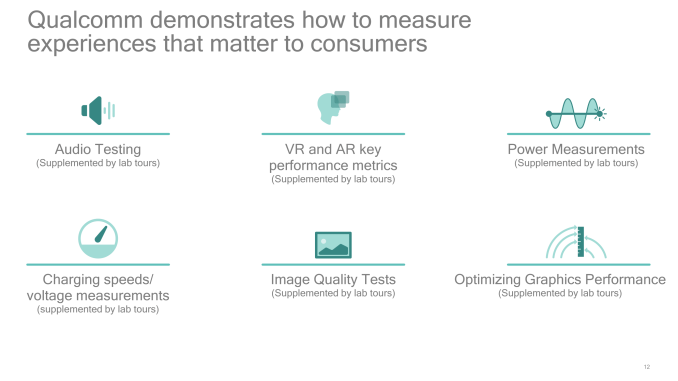
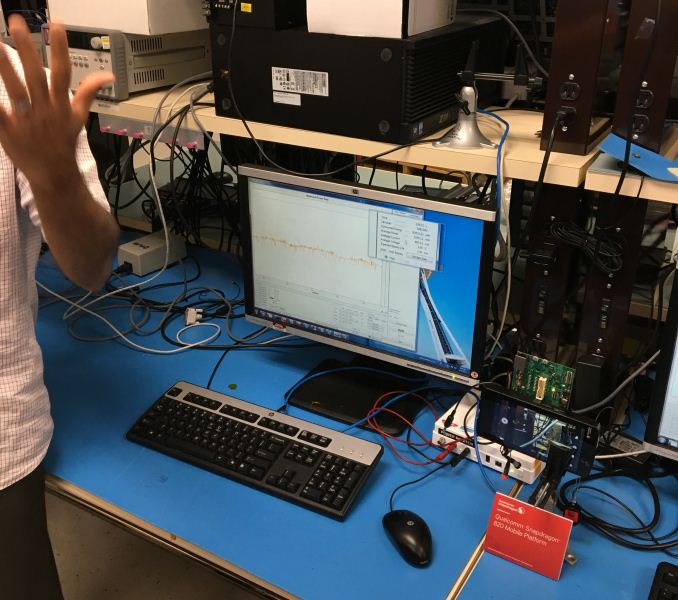
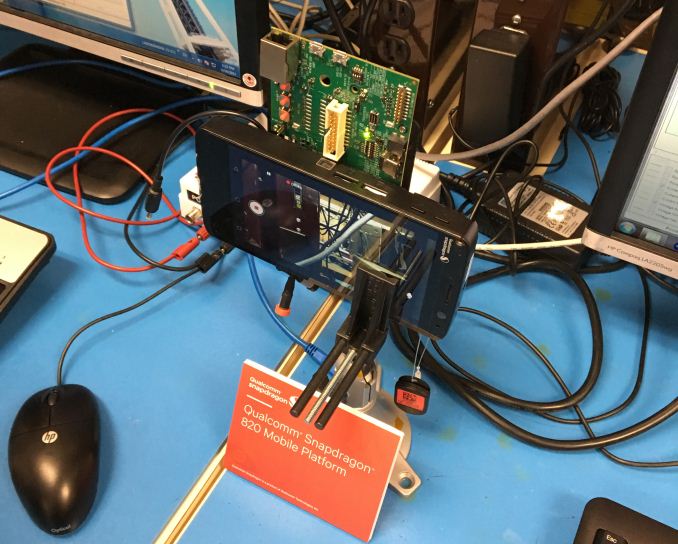

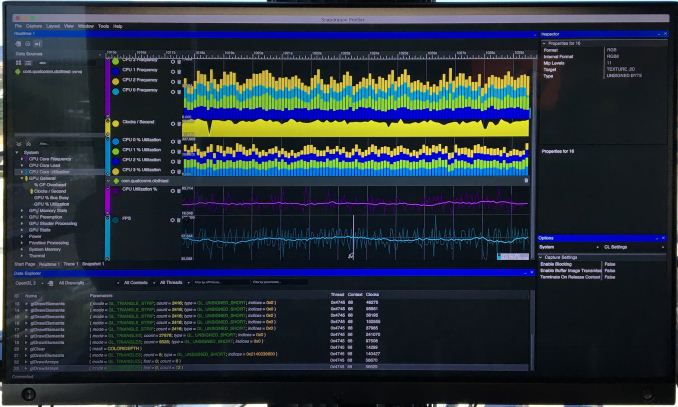

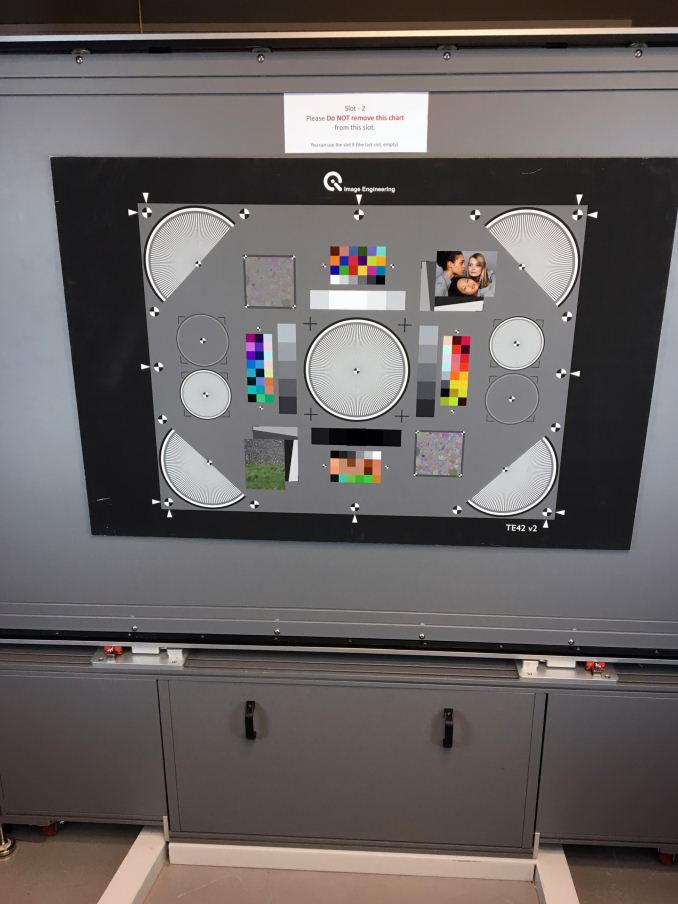



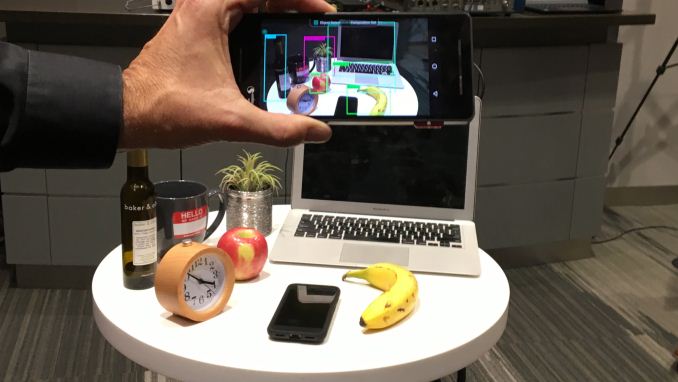

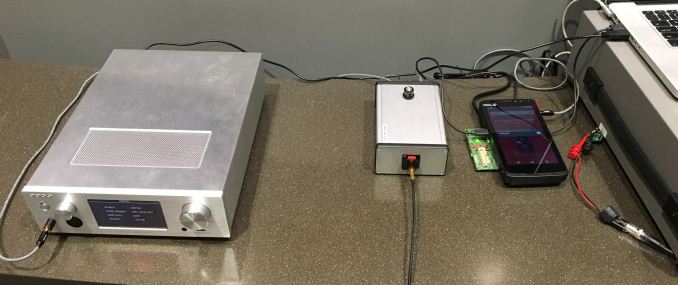








128 Comments
View All Comments
niva - Thursday, March 23, 2017 - link
You keep saying that it's not "real world" when earlier there were links provided that should be showing you that in the real world, today, multithread already matters, and having more real/virtual cores helps. This is all for the simplest and most used task for cell phones, web browsing, multi threading is quite useful. I'm fairly confident that if an Android manufacturer ran on hardware identical to the iPhone and outscored it across the board, you'll buy the iPhone anyways. Good for you but you're not helping in this discussion, just admit your apple fanboyism and bow out. Why do you even care about the SD 835?yankeeDDL - Thursday, March 23, 2017 - link
Let me be more specific then.Web browsing is a key part of mobile experience. In the Kraken, WebXPRT and JetStream the performance difference is stunning: Kraken: 2.4X faster; WebXPRT: 1.35X faster, JetStream: 2.4X faster.
Yes, the difference is not only due to HW, but also to code optimization. Still: damn!
In the GPU department: in GFXBench, the performance is on-par (when reported).
There's a noticeable advantage of the S835 in 3DMark (1.4X Overall), but in Basemark we loose again by nearly 2X.
Yes, the comparison is (a bit) apples to oranges, but one has to admit that for a brand new SoC it would make sense to expect an hands-down victory over a noticeably older phone.
BurntMyBacon - Thursday, March 23, 2017 - link
@yankeeDDL: "Still: damn!"Agreed, Apple has a massive advantage in javascript benchmarks. It is impossible to say how much (if any) of that is due to the SoC vs the software stack, but the advantage is undeniable.
It is not unexpected that the A10 would win in Basemark. The A10 is making use of a low level API (Metal) where the SD835 is using a high level API (OpenGL ES). Again, Apple's better software cohesion and better use of APIs benefits them here. Still, the difference is quite formidable and the SD835 actually looses to the Kirin 960 as well. It would seem that the Adreno 540 is not well suited to this workflow. Therefore, it is unlikely that use of Vulkan will suddenly propel them ahead, but the gap would be a lot smaller. By the time use of Vulkan becomes common place, A11(?) will be out, so it's really a moot point.
The GFXBench Car Chase ES 3.1 / Metal chart title suggests it should have an Apple data point (only user of "Metal"). It'll likely show the same thing as the basemark test given the disparate APIs, but I'm still curious (though not critical without further considerations) as to why it wasn't included.
The fact that you can't get an A10 without iOS and you can't get iOS on another companies SoC makes considerations about whether it is better than the android SoCs or not a tertiary concern and academic when compared to the overall platform experience. There are plenty of reasons not to like an iProduct. Performance isn't generally one of them.
tuxRoller - Friday, March 24, 2017 - link
If you take into account Qualcomm's optimized browser, the differences relative to the iPhone 7 change to:(% better than the sd835)
Kraken: 140 -> 106 webxprt: 35 -> -26 jetstream: 140 -> 92
I'm sure they could do more, but I'd be amazed if the remaining differences in kraken & jetsteam were mostly due to software.
Despoiler - Wednesday, March 22, 2017 - link
It's mostly the OS that Apple has superiority in. That's why they can use a dual core while Android phones are quad or octacore.grayson_carr - Saturday, March 25, 2017 - link
Isn't the A10 a quad core, or more correctly, a dual dual core big.LITTLE chip? Same as Snapdragon 820?akdj - Friday, March 31, 2017 - link
Yes, A10 is a quad-core big.LITTLE SoC, w/a 12-core GPU, I believe... as well, Apple on the 7+ added another GB of RAM = 3GB on an iOS phone, iPad 12.9" has 4GB -- but the iOS integration with the A10... as well, the last several generations of 'home brewed' ARM chips - and Apple's investments in silicon engineering from nVidia, Intel, AMD, Qualcomm, TI and others has paid dividends.That said, off Apple/AX chipsets for a second.... excellent 'first look' and factory/testing insight. That is very cool stuff!
I think, as geeks, and 'passionate' groups of faithful mobile phone OS folks amongst our population, folks who take this stuff more seriously than the Sunday sermon... we should all take a breath and remember that it's a 'chip preview'
Not an Android phone!
The issues with using the same chip on every device running Android --and every OEM 'skinning' their handset is a huge contributor to the varying performances; real world or objective bench tests. Like Windows as an OS on the desk and lap over the years, we've ALL had our 'Vista' moments. I'm an OS X/macOS user specifically because of 'vista and a curiosity about OS X in 2006 --- but again, I digress...
Qualcomm has built a chip able to be put in to every flagship other than iOS this year and 'compete' just fine. In the performance metrics all above are bickering about. But as an iPhone 7+ owner/lover (it's an excellent phone) -- my appreciation for the 835 goes well beyond its parity or near ...or exceeding metrics of CPU and GPU, they've built a gigabit LTE modem (who cares if you won't 'get that' - it's still gonna haul ass!) - incredible image processing and 'encryption/protection' with its iris scanning and biometric uses ...as well as the smaller node, the AIO model with all,parts of the 'brain' build in house --- IMHO, it's a 50-50 tie between chip engineering but I'm bias as an ambidextrous user since '07/'08 (iOS/Android) - I have always had one of each, the family is iOS and since switching everyone over, my workload has decreased 95%. It's vertical and horizontal integration and aggregation with macOS is, still to me, science fiction and for the family business... a God Send.
That said --- my S6 has an Exynos (sp?) processor, Note 4 was Qualcomm and, as I skip Android gens, my next will be a Qualcomm. I know as an iPhone 7+ owner I was delighted to learn that the model I bought has a Qualcomm modem, not the Intel;)
Special trip for you guys. Great write up and truly amazing to me ...I'm 45, born with the 8086 processor and the progress mankind has made in such a tiny package, which is high speed connected with exponentially more power than just a decade ago... in our pocket. We all need to remember between our friendly iOS/Android 'disputes' -- the special world we enjoy today specifically BECAUSE Apple and Google/Qualcomm/SnapDragons and their host of OEMs building what just a decade ago meant 110v, plugged in No mobility, significantly slower - even wired connectivity. None of the 'Millions' of free, $1, $5 & ten buck 'programs/software' then, apps, now - available on demand! Over 30 million song libraries, endless knowledge and tools, true magic is what I think the SD835 A10 Fusion and their predecessors are/were.
I'm old now, but not compared with the mountains I live in -- lucky enough to have spent the second ½ of my life quite literally watching these chips come to fruition ...I think it's the A10 when announced... it had/has over 3 billion transistors... and the SoC's the size of our fingernail!
Screw arguing. It's a competitive world and WE are the beneficiaries!
edlee - Wednesday, March 22, 2017 - link
the 835 has a 10% stronger gpu than a10, its just nuts that apple, not being a cpu designer at heart, can design a better cpu/soc that is years ahead of of what arm and qualcomm can produceBedfordTim - Wednesday, March 22, 2017 - link
There is a price/performance trade off with processors. Apple has chosen to make a much bigger processor which is why it is faster. Think Atom vs Core. One is slow but cheap and one is expensive and fast.Apple are not "years ahead". They have chosen to spend more on the processor.
Lord-Bryan - Wednesday, March 22, 2017 - link
"They have chosen to spend more on the processor"They also had 64bit arm cores 2 years before Qualcomm released theirs, And that's is why they are year's ahead in performance and power efficiency